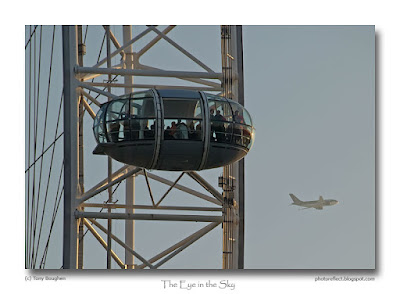 click photo to enlarge
click photo to enlarge"Poetry lifts the veil from the hidden beauty of the world, and makes familiar objects be as if they were not familiar."
Percy Bysshe Shelley (1792-1822), English Romantic poet
Shelley's perceptive remark about the power of poetry to reveal the extraordinary in the ordinary might also be applied to photography. If, in place of the analytic and expressive powers of the poet, we substitute the observational and representational powers of the photographer, we see that photography too can show us beauty and interest in that which is frequently overlooked.
The other day I was visiting a gallery, looking at examples of modern design, and reading about the sources of inspiration that prompted the forms the designers had applied to furniture, jewellery, ceramics, etc. After I had reflected on what I saw I went outside to find that a shower had fallen whilst I was indoors. Some metal tables that, in better weather, are used by people to eat outside the gallery cafe were covered in drops of rain. Perhaps I was inspired by the example of the designers whose work I had been studying; maybe the shiny highlights simply caught my eye; or it could have been the yellow picked up from the nearby wall (making the rain look like liquid gold) that was the attraction. Whatever the reason, I was drawn to the texture and patterns that the rain produced on the tables, and I took a number of photographs from different angles. I've seen wet tables before, but on this day I looked more closely and saw interest and beauty in them: the familiar became something extraordinary.
photograph & text (c) T. Boughen
Camera: Olympus E510
Mode: Aperture Priority
Focal Length: 150mm (300mm/35mm equiv.)
F No: f7.1
Shutter Speed: 1/100
ISO: 100
Exposure Compensation: -0.7 EV
Image Stabilisation: On







.jpg)

.jpg)



















